Rickie Fowler’s spin loft numbers are a big part of his ball striking prowess. Can you say the same about yours?
Aside from being one of the most popular players in golf, Rickie Fowler’s recently revamped golf swing has also turned him into one of the game’s strongest players from tee to green.
There are many parts of his swing you’d do well to emulate, but I dove into the details through a full body and club motion tracking system that measures over 600 images per swing, called GEARS Golf, to help explain some of the most important ball striking factors in Rickie’s game.
At GolfTEC, one of the most important factors we focus on is called spin loft, and it’s something Fowler controls exceptionally well. Even if you have heard of this term before, it’s far more important than you probably ever realized.
What is spin loft?
Spin loft is the angular difference between the club’s angle of attack (AoA) and dynamic loft at impact, creating the primary variable determining how much backspin is put on the ball. Dynamic loft is represented by the red arrow and angle of attack is represented by the yellow arrow in the figures below.


Explained simply when talking about the driver, a smaller difference between AoA and dynamic loft often seen with better players creates less spin on the ball and more distance (Fowler), and a larger the angle between the two often seen with less skilled players creates more spin and less distance.
Rickie Fowler’s spin loft numbers
Looking at Fowler’s swing at impact on GEARS compared to a typical amateur with a significant slice and lack of distance, notice the differences between each player’s spin loft numbers:
As shown above, Fowler’s spin loft is 11.3 degrees, while the amateur’s is nearly triple that at 28.5 degrees. This difference means the amateur has created too much backspin, thus reducing his distance potential.
The difference in dynamic loft and AoA can be found in how the golfer strikes the golf ball. Below is a comparison between the amateur (left) and Fowler (right) in terms of how each golfer attacks the ball off the tee. Rickie’s attack angle is far shallower at only 1.09 degrees down, while the amateur golfer strikes the ball at an alarmingly steep angle of 3.38 degrees down.

As you can see, Fowler’s attack angle allows for a shallower swing and he employs an inside-to-out club path, with a slightly closed club face to the path. All of these variables allow Fowler to keep his spin loft low, play a slight draw, and carry the ball well over 290 yards.
How to improve your spin loft
A big key helping Rickie Fowler through impact into the follow-through is the backward movement of his shoulders. We call this “shoulder bend,” and through our SwingTRU Motion Study have determined measured differences in this movement between pros like Fowler and amateurs like the one noted above.
Creating shoulder bend movements closer to the average measurements of PGA Tour pros benefits the golfer in two key ways:
1. It allows the golfer to shallow the downward angle of attack at impact, which can lower the spin loft and backspin rate.
2. It helps the golfer swing faster.
Looking at a visual description from GEARS with Fowler (the main golfer in yellow) compared to the amateur golfer (in blue), there are three key differences to notice as each swings.
1. How much more Fowler has pushed his hips out toward the target in the downswing, which helps allow the shoulders to bend backward more. This move below illustrates how much more Fowler is bending backward because of his hips!
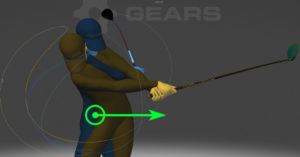
2. The difference of each golfer’s hand path and handle of the club, when the club is parallel to the ground in the downswing to the mid point of the follow-through. As illustrated with the yellow arrows in the figures below, Fowler’s trajectory moves upward while the amateur golfer’s (blue arrows) moves downward. This is directly correlated to the amateur’s increase in downward AoA and higher spin loft, compared to Fowler’s AoA and spin loft measurements as referenced above.
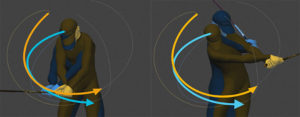
3. How much straighter Fowler’s elbows are in the follow-through compared to the amateur golfer’s. Bending backward enables the golfer to keep the elbows straighter and stretches out the swing arc farther, allowing the golfer to swing faster. The amateur golfer has bent the elbows, narrowing the arc to result in a slower swing speed.

A drill for better spin loft!
Implementing the proper shoulder bend movement and arm extension like Rickie Fowler could do wonders to help your spin loft and overall ball striking, so here’s a drill to directly help improve this crucial part of your swing:



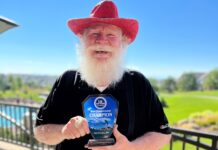


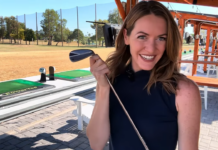


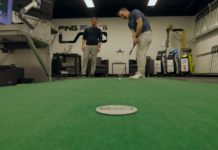
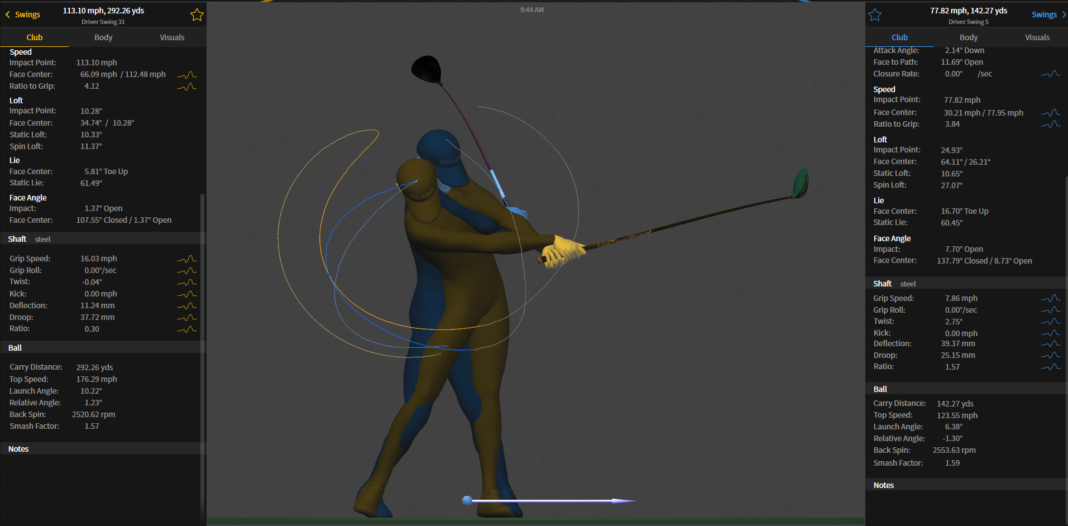

Any instructors in NYC area
Joe, our closest locations to the city are in New Rochelle, Carle Place on Long Island, and in Englewood, NJ. This location map may provide a better look on what’s closest to you: GolfTEC Locations Near New York City (Map)
Some players feel they hit their driver best by making a down and back move from the top with the driver…does this facilitate the belly action spoken of in this article?